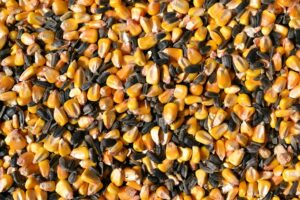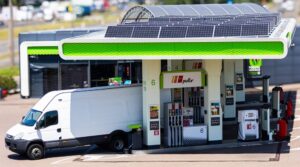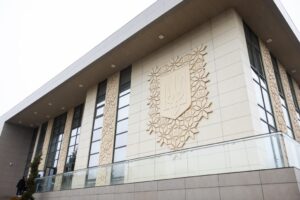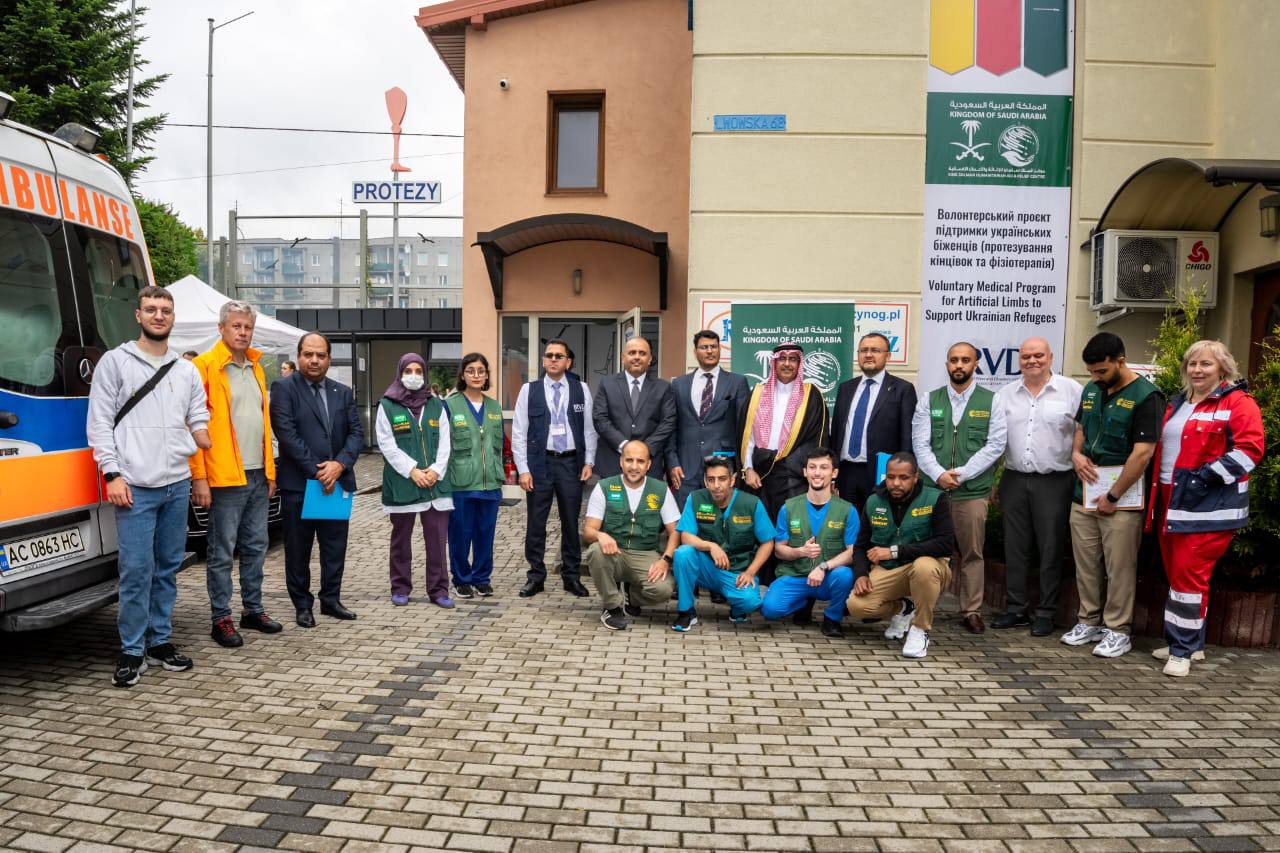
The sales rates in the season-2024 were significantly higher compared to the previous year, especially for corn and sunflower, Agrohub reported based on the results of two waves of research on the efficiency and effectiveness of growing the main crops of the season-2024.
“At the time of the first wave of the study (end of January 2025), the percentage of sales of these crops was more than 60%, while at the end of January 2024, only 25% of corn and 27% of sunflower were sold,” the researchers said.
According to the study, sunflower was sold almost completely, which was due to a decrease in its share in the crop structure and high demand from the processing industry, as well as an increase in the number of oil extraction plants. For export-oriented crops, a stable sea export corridor plays an important role in shaping the sales rate: despite the threats and shelling of port infrastructure, it remained the most effective channel for selling products, analysts say.
The positive price situation was the main factor behind the growth of profitability of agricultural production in 2024, the report says. Thus, the break-even point decreased in many crops, while the profitability indicators increased. According to the results of the season-2024, the average forecast EBITDA for such crops as winter wheat, rapeseed and barley, as well as sunflower and corn amounted to $402 per 1 ha, which exceeded last year’s forecast level of $94 per 1 ha, i.e. 4.3 times, Agrohub calculated.
The analysts reminded that the forecast EBITDA is an expected estimate of profitability per hectare, calculated on the basis of current selling prices of already sold products and forecast prices for the residues.
Experts identify sunflower, corn, and rapeseed as the crops with the highest expected profitability in the 2025 season.
Despite the fact that in the 2024 season the yields of the studied crops decreased, the positive price dynamics during the year allowed not only to maintain but also to increase the profitability of crops. The main reason for the decrease in yields was drought and heat in the central, southern and eastern regions. Soil temperatures in summer reached above +60°C, and local rains failed to save the situation. In the West, where there is traditionally more rainfall, the yield decline was not significant, the researchers emphasized.
In addition, analysts drew attention to an interesting trend in the dynamics of costs, which has been observed for two seasons in a row. In particular, the costs of growing decreased slightly – within 8% for sunflower and rapeseed, mainly due to the reduction of fertilizer costs. At the same time, crop protection costs for sunflower and corn decreased by 11% due to dry weather conditions. Lower yields per hectare and dry weather conditions resulted in lower costs for transportation and grain processing, as the average moisture content of harvested corn in the 2024 season was 16.7% compared to 19.8% a year ago.
“The 2024 season illustrated how the agricultural business in Ukraine is learning to adapt to complex challenges: from war and unstable logistics to climate change and lack of resources. Increasing profitability and efficiency in such conditions is the result of flexibility, strategic planning and proper agricultural practices,” Oksana Bobrova, Head of Agrohub Benchmarking, summarized in her statement.
The study of the first and second waves of efficiency and effectiveness indicators of the main crops of the 2024 season, conducted by Agrohub, involved 14 largest Ukrainian agricultural holdings. The total area of analysis covered 1.7 million hectares in eight macro-regions of Ukraine.
The data on crop sales in the 2024 season are based on Agrohub’s research conducted in January-May 2025 among 83 field companies with a total area of 1.7 mln ha. The area of the studied crops: sunflower – 302.5 thou hectares, corn – 363.4 thou hectares, soybeans – 411.2 thou hectares, winter wheat – 403.5 thou hectares, winter rapeseed – 169.5 thou hectares and winter barley – 18 thou hectares.

The total capacity of SPPs in the network of OKKO filling stations has reached 5.9 MW: these are stations at 244 filling stations, 40 of which were put into operation in the first half of 2025, the company’s press service reports.
“In the first half of 2025, OKKO commissioned rooftop SPPs at 40 more filling stations, as well as on the building of its trucking company. Thus, 244 filling stations of the network are already meeting part of their electricity needs with sunlight. Their total capacity now reaches 5.9 MW,” the company said in a release on Monday.
It is specified that the capacity of its rooftop SPPs is mainly 15-25 kW, although there are several stations with 50-65 kW.
“Depending on the capacity, electricity consumption, configuration, and other factors, one such SPP can cover 15% to 55% of the daily consumption of gas stations during the period of active generation,” the company said.
According to the press release, OKKO intends to continue solar electrification of its filling stations, and in the coming years, rooftop SPPs may be installed at about 100 more of them, where there are technical possibilities for this.
It is specified that OKKO will invest UAH 30 million (including VAT) in the SPP project at its filling stations in 2025.
“It is expected that in 2025 the total generation of solar stations at OKKO filling stations will exceed 5 million kWh,” the release says.
As reported with reference to Vasyl Danyliak, CEO of OKKO Group, OKKO Group, which includes the operator of the eponymous filling station network, Concern Galnaftogaz, plans to have approximately 600 MW of capacity in wind power, 200 MW in solar power and 150 MW in energy storage facilities over the next five years.
The network under the OKKO brand includes approximately 400 filling stations.

Tea and coffee production in Ukraine involves 570 business entities, in 2024 they earned UAH 10 billion, which is 19% more than in 2023, when their revenue amounted to UAH 8.6 billion, according to a study by YouControl.
It is noted that as of July 2025, there are 570 business entities in Ukraine that are not in a state of termination, registered and conducting financial activities under CEA 10.83 “Production of tea and coffee”. In particular, 264 operate in the form of companies, and 306 are individual entrepreneurs. Most of them are concentrated in Kyiv – 153 entities, in Dnipropetrovska (54) and Kyiv (48), Lviv (40) and Odesa (36) regions.
The analysts noted that among the analyzed companies there are also legal entities with foreign capital, in particular from China, India, Turkey, as well as Cyprus, Moldova and other European countries.
According to the study, the ten largest tea and coffee companies in Ukraine earned a total of UAH 7.9 billion, which is 79% of the total revenue of companies that submitted financial statements for 2024.
According to YouControl, the leaders of the coffee market are Monomakh JSC with UAH 2.3 billion in revenue, Fes Ukr LLC (MacCoffee and HILLWAY brands) with UAH 2 billion, Galka Ltd and Coffee from Lviv LLC (Galka and Coffee from Lviv brands) with UAH 1.63 billion, and Vienna Coffee LLC (Vienna Coffee brand) with UAH 526 million, TC Trade LLC (brands Greenfield, TESS, Princess Nuri, etc.) – UAH 408 million, Food Pack LLC (brand Gemini) – UAH 373.6 million, Trypillian Sun LLC (brands Trypillian Sun, Sherlock Secrets, Tea Moments, Tea Family) – UAH 323 million, Ukrainian Coffee Company LLC (brands GALEAD’OR, XO, 1CUP, 1CUPsule. Inspiro Gusto, 1CUPsule. EGO, RIO NEGRO, LEONARDO) – UAH 280 million, SUB LLC Ukrainian Tea Factory Ahmad Tee (Ahmad Tea brand) – UAH 187.3 million, LLC Lisova Skazka (Lisova Skazka, Tea Collection, EcoTea brands) – UAH 165 million.
“Unfortunately, the market leaders are not without ties with the aggressor,” the resource noted and added that this thesis applies to half of the rating participants.

The pizza chain Domino’s Pizza Inc. increased its revenue by 4% in the second quarter of fiscal year 2025, while its net profit decreased by 8%.
According to the company’s press release, quarterly revenue amounted to $1.15 billion compared to $1.1 billion in the same quarter last year.
Domino’s Pizza’s net profit for the quarter ended June 15 fell to $131.1 million from $142 million a year earlier. Earnings per share decreased to $3.81 from $4.03, which was worse than the consensus forecast of $3.95 of analysts polled by LSEG.
The decline in net income was due, in particular, to a change in the company’s investment in DPC Dash Ltd.
Comparable sales of Domino’s in the United States grew by 3.4% last quarter, which was better than the average analyst forecast (+2.2%). Comparable sales abroad increased by 2.4%.
Last quarter, 178 Domino’s restaurants were opened, including 30 in the United States.
The company’s shares jumped 5.3% in pre-market trading on Monday. Since the beginning of this year, their value has increased by 11%.

On the first day of the annual meeting of heads of foreign diplomatic missions of Ukraine 2025 under the slogan “From the power of diplomacy to the diplomacy of strength”, Foreign Minister Andriy Sibiga announced plans to open four more embassies by the end of this year.
According to the MFA website, these are embassies in the Dominican Republic, Ecuador, Panama, and Uruguay. At the same time, the Minister informed about the reduction of Ukraine’s diplomatic presence in Cuba. According to him, the freed-up resources will be used to strengthen Ukraine’s presence in the region.
The Minister also announced plans to open more than 10 new consular offices by the end of this year. The new consulates will be opened in Romania, Iraq, Italy, Germany, Slovakia, and two in France and Poland. In addition, the status of Ukraine’s consulates in Antalya and Gdansk will be raised to the level of consulates general.
Sybiga emphasized that Ukraine’s diplomatic service is initiating new strategies and revising previous ones.
“We look to the future and already see the global role of Ukraine, including in the post-war period. This is a meeting about the future and our geopolitical role,” he said.
In this context, the Ministry of Foreign Affairs for the first time initiated and prepared the Strategy of Ukraine on the Arctic, Antarctic and Oceans.
“This will allow us to guarantee Ukraine’s voice in global processes in the future,” he emphasized.

Ambassador of Saudi Arabia to Ukraine Mohammed bin Abdulaziz Al-Baraka launched the fifth stage of the project of prosthetic limbs for Ukrainians in Poland, implemented by the King Salman Center for Humanitarian Aid and Support from July 14 to 21, 2025. Ambassador of Ukraine to Poland Vasyl Bodnar took part in the project.
This project is a continuation of the humanitarian aid provided by the Kingdom of Saudi Arabia to Ukraine, which included food, medicines and power generators. The aim of the project is to provide prosthetic limbs to those who lost them as a result of the war, which will help improve their quality of life and restore mobility.

The project embodies the Kingdom of Saudi Arabia’s commitment to alleviate the suffering of Ukrainian citizens in the ongoing war in Ukraine and is a continuation of its efforts to mitigate the humanitarian consequences.
The most important goals of the Saudi project are to provide medical assistance to Ukrainian disabled people in Poland. At this stage, prosthetic limbs were fitted to 20 beneficiaries, and the necessary measurements of the limbs for the next stage were taken. Their condition was also monitored, and post-prosthetic rehabilitation and medical education of Ukrainian beneficiaries was conducted.
The Saudi Humanitarian Support Program for Ukraine launched its first phase of the prosthetics project in September 2024. The current stage is the fifth within the framework of this project. Two more stages will be implemented by the end of 2025.
During the previous stages, 115 prosthetic limbs were provided with the participation of 43 qualified medical volunteers. The current stage is being implemented with the participation of seven volunteers. The goal of the project is to fit a total of 137 prostheses, bringing the average number of prostheses fitted per campaign to 30. The project uses the latest Direct Socket prosthetic technology.
The expected cost of all stages of the Saudi humanitarian project to provide prosthetics to Ukrainians, implemented and planned for implementation this year, is USD 3,481,674.67. This project is part of the humanitarian assistance provided by the Kingdom of Saudi Arabia to alleviate the suffering of amputees around the world, empower them and improve the quality of life in the affected areas of the world.
It should be noted that during the visit of Prince Faisal bin Farhan Al Saud to Kyiv in February 2023, Saudi Arabia announced various humanitarian aid packages to Ukraine in the amount of USD 410 million.
Source: arab.com.ua/ukr/news/saudivska-araviya-zapuskae-p-yatiy-paket-1752857775.html